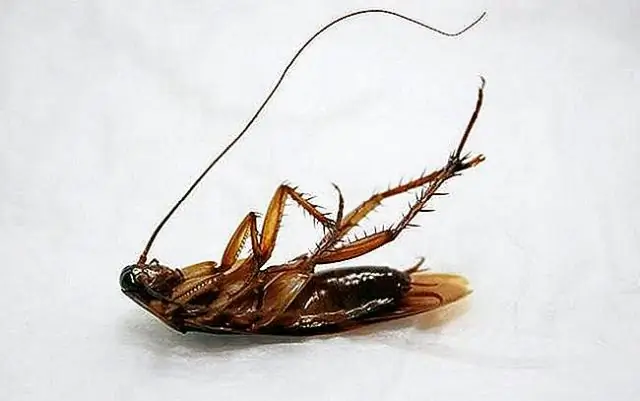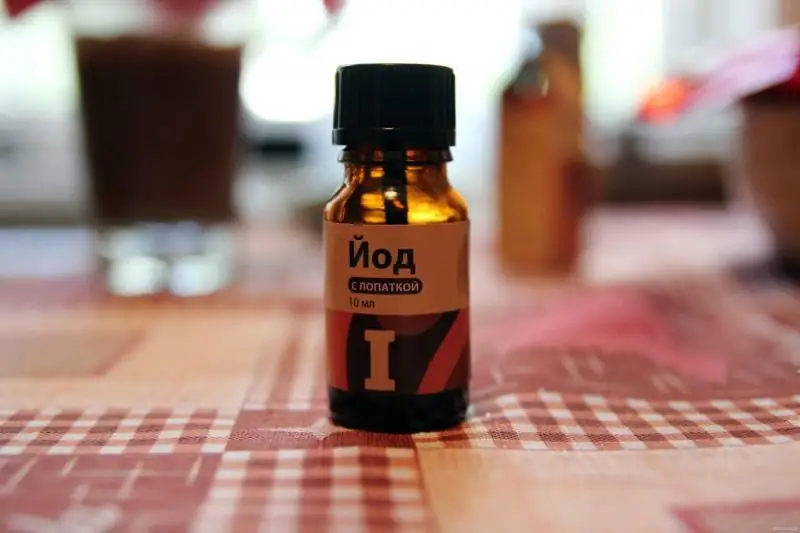
Table of contents:
- Author Bailey Albertson [email protected].
- Public 2023-12-17 12:53.
- Last modified 2025-01-23 12:41.
How to treat a greenhouse from a whitefly: we fight a harmful insect

Whitefly is an unwanted guest in greenhouses, causing a lot of trouble. This insect is able to gradually destroy a significant part of the crop. To protect your garden crops, you need to pre-treat the greenhouse.
How to treat a greenhouse from a whitefly
Whitefly parasitizes plants, feeds on their juices, which leads to slower growth and even death of crops. In order to harvest a good harvest in a greenhouse, it is worth taking care of the destruction of the whitefly in the fall or early spring before planting seedlings in the ground. In autumn, you can work both the greenhouse itself and the soil in it. In the spring, it is permissible to process the greenhouse at least 2 weeks before planting seedlings, but it is impossible to spill the soil with chemicals or use sulfur checkers.

Whitefly is a dangerous pest
Greenhouse preparation
At the initial stage of preparing the greenhouse for careful processing, it is imperative to remove from it all the remaining tops, fruits, leaves, roots. All this must be burned, and not put in a compost heap, since plant residues from the greenhouse can become a source of infection.
After cleaning, all structural elements must be washed with hot or warm soapy water. It is convenient to clean frames and glasses with a brush on a sufficiently long handle. Particular attention should be paid to grooves and joints. The remains of the detergent must be washed off. You can do this with a hose.
Industrial facilities
After the preparatory stage, the frames and glass in the greenhouse are treated with a disinfectant. Suitable for these purposes:
- bright pink solution of potassium permanganate (glass, rods, ropes are treated);
- colloidal sulfur (80 g per 10 liters of water);
- Bitoxibacillin (0.1 kg per 10 L of water);
- copper sulfate with lime for processing wooden supports (0.2 kg of copper sulfate and lime per 10 liters of water).
It is not necessary to rinse off the remains of disinfectants from frames and glasses if the treatment is carried out in the fall. Additional rinsing is necessary if the greenhouse is treated with colloidal sulfur in the spring. Potassium permanganate, Bitoxibacillin are completely safe. Only wooden supports are treated with copper sulfate with lime. This composition does not require rinsing.
For processing the walls of the greenhouse I use potassium permanganate. I make a deep pink solution and spray it on the already washed structural elements. I do not advise using detergent creams and pastes that contain abrasive substances for washing polycarbonate greenhouses. Polycarbonate can be easily damaged.
After processing the elements of the greenhouse, you should start disinfecting the soil. Whitefly larvae hibernate in greenhouse soil. Are used:
- Confidor (1 g of the drug per 10 l of water);
- Aktara (4 g per 10 l of water);
- Akarin (1 ampoule per 10 liters of water);
- Spark (2 g per 10 L of water)
- bordeaux liquid (30 g per 10 l of water).
The required amount of the drug is diluted in a bucket of water and the upper part of the soil is spilled or abundantly sprayed. The approximate consumption of the working solution is 5 liters per 1 sq. m.
Folk remedies
The use of chemicals is not always justified and is expensive. For this reason, before resorting to such drastic measures to combat the whitefly, you can try to treat the greenhouse with folk remedies.
A good effect is given by spilling the soil with boiling water. Under the influence of high temperature, whitefly larvae die. The top layer of the soil is spilled with boiling water, after which the ground is covered with a film for 2-3 days.
Whitefly larvae are afraid of frost, so for regions with a cold climate, freezing of the soil is permissible. If possible, it is better to open the greenhouse for the winter so that the soil is well frozen.
Fumigation with smoke bombs
Fumigation with sulfur bombs is an effective way to combat whitefly. The substances formed during the combustion of sulfur dioxide destroy even the larvae. Tobacco smoke bombs are equally effective. But to achieve the desired effect, it is necessary that the fumigation procedure is carried out correctly:
- All cracks and holes in the greenhouse are caulked, sealed with tape.
- A smoke bomb is placed on a non-combustible stand in the center and set on fire, after which they immediately leave the greenhouse, tightly closing the doors behind them.
- After 2 days, the door must be opened and the greenhouse must be ventilated, first removing the tape and sealants so that mold does not form.
In the fall, I always set fire to a sulfur stick in the greenhouse. If everything is done according to the rules, the whitefly is destroyed. Before processing from the greenhouse, I definitely take out all the inventory, metal and wood products. The greenhouse should be free of personal belongings and, as it seems obvious, food. Substances that are formed during the combustion of sulfur cause corrosion of metals and gradually destroy wood. For this reason, I use this method of fighting whitefly no more than once a year. There is also a little secret for glass greenhouses. Before processing, you can moisten the walls with a spray bottle. Substances formed during combustion react with water to form hydrochloric acid. This gives an additional disinfecting effect. After processing, it is not necessary to rinse the walls of greenhouses with water. All potentially hazardous substances decay during the winter.

Sulfuric checker is one of the most effective methods of fighting whitefly
Garlic
Garlic repels the whitefly. To cultivate the soil in the greenhouse, as well as the construction of polycarbonate or glass itself, it is necessary to grind 250 g of peeled garlic cloves and pour 1 liter of hot water over them. The mixture is infused under a closed lid for 2 days, and then filtered, poured into a spray bottle and sprayed on the inner walls, the ceiling in the greenhouse, and the soil. It is not necessary to wash off the remaining solution from the walls of the greenhouse.
We process the greenhouse from the whitefly - video
Reviews
Treating the greenhouse in late autumn will help protect future crops from the whitefly pest. You can use both folk remedies for insect control and industrial preparations, or you can combine them.
Recommended:
What Means And How To Dry-clean The Car Interior With Your Own Hands + Photos, Videos And Reviews

You can do it yourself dry cleaning of the car interior. You just need to know which means are suitable for this
Fleas In The Apartment: Where And How To Get Rid Of Their Appearance In The House Quickly And Efficiently Using Dichlorvos, Wormwood And Other Means + Video

Where do fleas come from in a house or apartment and how to determine their presence. Effective ways to help get rid of parasites quickly
How To Remove Iodine From Clothes And Other Surfaces, Than To Wash It From The Skin, Various Methods And Means + Video And Photo

How to remove iodine from different fabrics, wash stains from furniture, body and other surfaces. Effective ways with instructions for use with photos and videos
Do-it-yourself Fabric Softener For Washing Machine And Hand Washing, Including Based On Vinegar, Soda, Borax And Other Means, Reviews

Benefits of a homemade laundry detergent. Popular recipes for conditioners. What can replace fabric softener. Reviews of home air conditioners
Greenhouse Whitefly: Signs, Control Measures, Features (photo, Video, Reviews)

Where does the greenhouse whitefly come from, what harm it causes, how to deal with it and what can be done as a preventive measure. Video. Reviews
